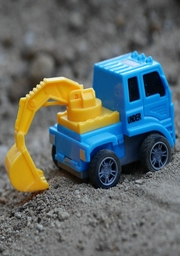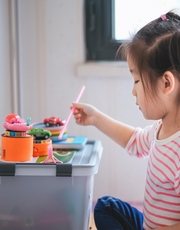Finding the Ideal Toy Truck for Your Child
Choosing the ideal toy for babies and young children can seem overwhelming with so many options, but the joy of finding the perfect toy truck for your child and watching the excitement on their face is undeniable. Toy trucks with brands such as Mack and Volvo have long been favourites in the toy industry.
Watching your little one push their toy vehicle across the floor is heartwarming. However, fun aside, it’s crucial to pick a toy that is not just entertaining but also safe and beneficial for development. Here’s how to navigate the selection process, focusing on toys from renowned brands which have long been favourites in the toy industry.
Age-appropriateness and safety first
The first step in selecting toy trucks such as Mack and Volvo is to consider their age-appropriateness. Selecting toys that are suitable for your child’s age group is crucial for their enjoyment and developmental progress. Toys designed for babies under a year old should have features that cater to their developmental stage, such as soft edges, non-toxic materials and parts large enough to avoid choking hazards.
The quality and safety of the materials are paramount. Choosing trucks made from durable, high-quality, non-toxic materials ensures your child can play without the risk of the toy breaking and causing harm. Babies often explore with their mouths, making the safety of materials an essential consideration.
It’s also important to look for certifications such as the ASTM (American Society for Testing and Materials) or CE (Conformité Européenne) marks, which indicate that the toy has been rigorously tested and meets safety standards. These certifications provide peace of mind that the toy truck you choose for your child has been designed with their safety as a top priority.
Toy trucks can have developmental benefits
Toy trucks offer more than just the fun of mimicking grown-up activities; they are tools for learning and development. They can enhance cognitive skills, teaching children problem-solving abilities and spatial awareness as they figure out how to navigate these toys around obstacles. Look for toy trucks that support learning through interactive features like shape sorters or sound buttons.
These toys are also invaluable for developing motor skills. The action of pushing a truck or engaging with its parts can bolster both fine and gross motor skills, while trucks with various textures and moving components encourage sensory exploration and improve dexterity. Collecting 1:18 scale diecast models offers a similar tactile experience, allowing enthusiasts to appreciate the intricate details and moving parts that mimic real-life vehicles.
In addition to cognitive and motor skills, toy trucks can also foster language development. As children play, they often narrate their actions, creating stories and scenarios. This type of self-talk is an important part of language acquisition. Parents can encourage this by engaging in play alongside their children, asking questions and helping to expand their vocabulary.
Supporting emotional and social skills
Toy trucks can significantly aid in the development of emotional intelligence and social skills in children. Through play, children learn cause and effect and begin to grasp the world around them. Toys that encourage imaginative play promote creativity and help children express their emotions.
Moreover, these toys can facilitate social interaction. Playing with toy trucks can teach children about sharing and cooperation, especially when the toys are shared with siblings or friends. Investing in sets of trucks that encourage group play can stimulate teamwork and social skills.
Toy trucks can also be a tool for teaching empathy and perspective-taking. As children engage in imaginative play, they often put themselves in the role of the driver or imagine the truck’s “feelings.” This type of role-play is a foundational aspect of developing empathy. Parents can support this by asking questions like, “Where do you think the truck is going?” or “How do you think the truck feels?”
How to decide exactly which truck is correct
Deciding on the best toy truck involves considering where to make your purchase. While physical stores allow you to see the product firsthand, online shops often provide a greater selection. It’s essential to read product descriptions and reviews carefully to understand how the toy performs in real-life scenarios when buying online.
While price is an important consideration, the highest-priced toy is not always the best option. Evaluate toys based on their educational value, safety and durability to find the best option for your child.
Finding the right toy truck involves balancing fun with educational value and safety. By focusing on age-appropriate features, enhancing development, and fostering emotional growth, you can choose a toy that will not only entertain your child but also aid in their overall development. The aim is to provide a play experience that is both safe and enriching for your little one.




 Katie Brenneman is a passionate writer specializing in education, mental health, family lifestyle and online safety. When she isn’t writing, you can find her with her nose buried in a book or hiking with her dog, Charlie. You can follow her on
Katie Brenneman is a passionate writer specializing in education, mental health, family lifestyle and online safety. When she isn’t writing, you can find her with her nose buried in a book or hiking with her dog, Charlie. You can follow her on 


